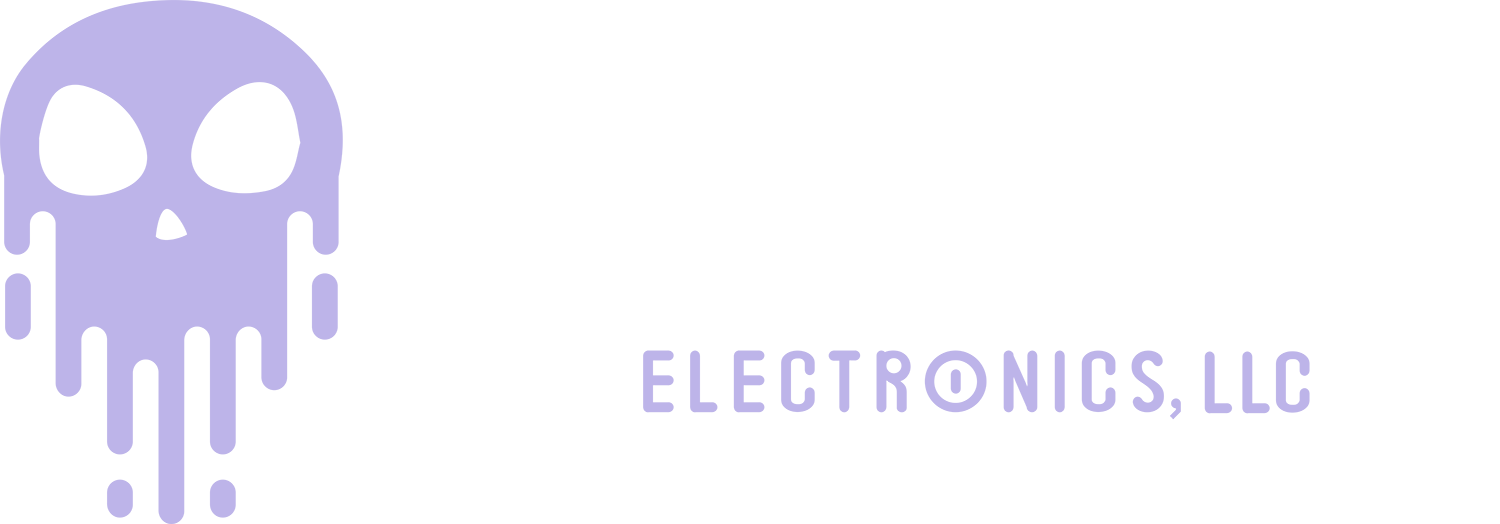Recording Networked Animations
Networked animations are recorded in two steps.
First we record an animation on the receiving controller. This animation will be triggered remotely later by the sending controller. Always start with the receiving controllers, not the sending controller.
Then we'll record an animation on the sending controller that triggers that animation that we just recorded. The sending controller should always be the last one to program so it can trigger all networked animations.
NOTE: This guide only shows a single receiving controller but you can include as many additional controllers as you like. Just record all the receiving controllers first and then trigger them from the sending controller.
Recording Animation on the Receiving Controller(s)
- Ensure the write-lock switch is in the 'unlocked' position

- Hold the network button down and press the record button

- All four number buttons will will start flashing blue
- If they are not flashing blue then start over, making sure you held the network button while pressing record
- Press a number button to select the network trigger track you'd like to record
- This network trigger track number will be used later on the sending controller to trigger this animation

- Press the number buttons to record your animation in real-time. Each number button corresponds with the same numbered relay and pressing the button will cause the relay to close.

- Press the record button again to finish the recording process

- Repeat for any additional receiving controllers
- CAUTION: The record-lock switch must remain in the unlocked position for the next step!
Recording animation on the Sending Controller
The sending controller is the one that has a trigger physically attached to it. Recording the sending animation is the same as normal recording except that you can send triggers wirelessly during the animation.
- Ensure the write-lock switch is in the 'unlocked' position

- Press the record button
- The recordable trigger tracks will start flashing green

- Press a number button to select the trigger track you'd like to record

- Press the number buttons to record your animation in real-time, like you did before

- At any time while recording the animation, hold the network button and press a number button to send a network trigger
- If you recorded the receiving animation to network trigger track 1, make sure to press button 1. If you recorded to network trigger track 2, make sure to press button 2. Etc...

- Press the record button again to finish the recording process.
- If you'd like to include a cool-down / lock-out period after animation playback, simply wait a length of time before pressing the record button again to stop recording.

- Press one of the trigger number buttons on the sending controller to start playback and test your animation. Or trigger it through one of the trigger inputs.

- (optional) Slide the write-lock switch to the 'locked' position on all devices now to prevent accidentally overwriting your animation.
Video tutorial coming soon.
Best Practices
Receiving controllers will only receive the network trigger during recording if their record-lock is in the unlocked position! If you want to exclude a controller from the recording then simply unplug it or set its write-lock switch to locked.
A single network trigger number can trigger multiple receiving controllers simultaneously. Likewise, a sending controller can send different network trigger numbers to trigger different controllers at different times.
Once an animation is recorded it is locked to the receiving controllers and new controllers added later will not automatically pick up the sent network triggers. This means that you can re-use the same network track numbers multiple times without accidentally triggering a controller in a different room. Once recorded you can be confident that only the controllers that responded during recording will ever respond in the future.
